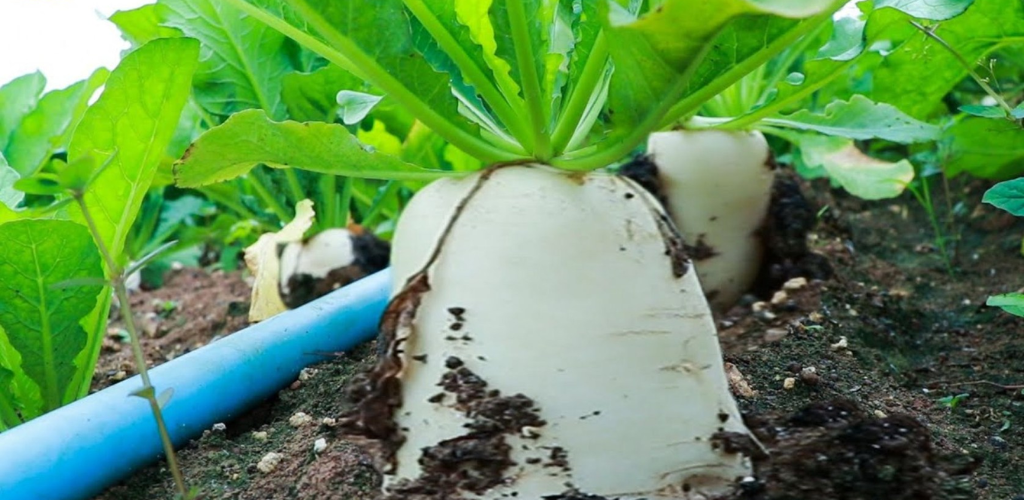7 secrets about growing radishes
Radishes are one of my favorite vegetable crops and I am about to plant my third spring planting. All of my plantings have a reasonable chance of success because I am committed to spoiling my radishes with indulgent care, the first secret I must tell you about growing radishes. Just because radishes grow fast doesn’t mean they are easy to grow or don’t need attention. Discover below the 7 secrets about growing radishes.
1) Radishes don’t grow as fast as they say.
Radishes can mature very quickly, but not always. Seed companies often promote early radishes that mature in 23 days, which I have never seen in my garden. Catalogs give a more reasonable estimate of four to six weeks, which takes into account periods of slow growth due to cold, cloudy weather. I always count at least six weeks for a good crop of spring radishes and ten weeks for fall-grown radishes.
2) Radishes need space
The rapid growth of radishes comes with conditions that include an uncompromising need for space. Seedlings that grow too close together will not grow, so sow seeds evenly spaced or thin them soon after they germinate. Small salad radishes will ripen well when they are 5cm apart, but leave 10cm between large daikons and other large radishes. Note that radish seed strips can be a great help for spacing and are quick and easy to make.
3) Growth without competition and in good conditions for a successful harvest
Radishes do not tolerate weeds or water stress and should have soil that never dries out. Early season mulches are prone to slug problems in rainy weather, so careful watering is the only solution when growing radishes. Lettuce has similar needs, so I often grow the two vegetables in adjacent rows.
4) Only certain varieties of radishes grow well in spring
All varieties of radish grow well in the fall, but only some do well in the spring. Fast-growing salad radishes in red, bi-color or pastel are the best choices in spring, but the only Asian radishes I’ve found that grow well from spring planting are Chinese types like ‘Dragon’ (the long red radishes). . Beautiful red and green “watermelon” radishes like “Misato Rose” and carrot-shaped daikons are always best in the fall.
5) Pest and disease problems are always around the corner
Radishes are not without problems. Beetles make small holes in leaves, slugs and snails make holes and grooves in perfect roots, and a sudden downpour can burst radishes and cause them to rot. These are just a few reasons to quickly harvest radishes that have sprouted from the ground, cut off the tops, and store them in the refrigerator.
6) A quick harvest is essential
Despite claims that some varieties of radish will last in the garden without spoiling, the truth is that a lot of bad things can happen to radishes that are not harvested for another day or two. It’s a paradox that while perfect radishes need to be harvested quickly, cut roots will keep in the refrigerator for months.
7) Radishes are very versatile in the kitchen
Radishes are delicious eaten raw, but they are also a vegetable that is tasty when cooked. It deserves wider use in grills and pots. Radishes are also a great small vegetable for fermentation. When you use salt fermentation methods to pickle small salad radishes, cut in half, the colors merge to produce a bright pink pickle.
The bottom line is that while growing radishes may be more intensive than many other vegetables, attention to detail will ensure a successful harvest.
